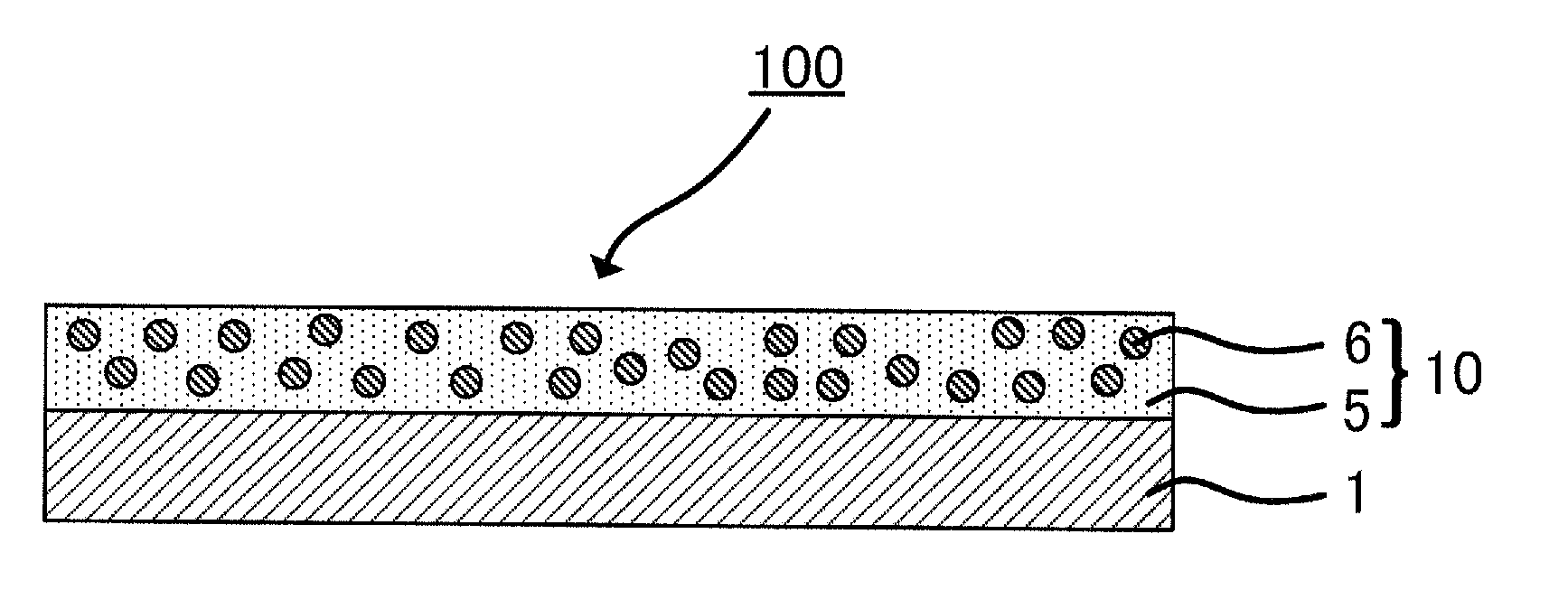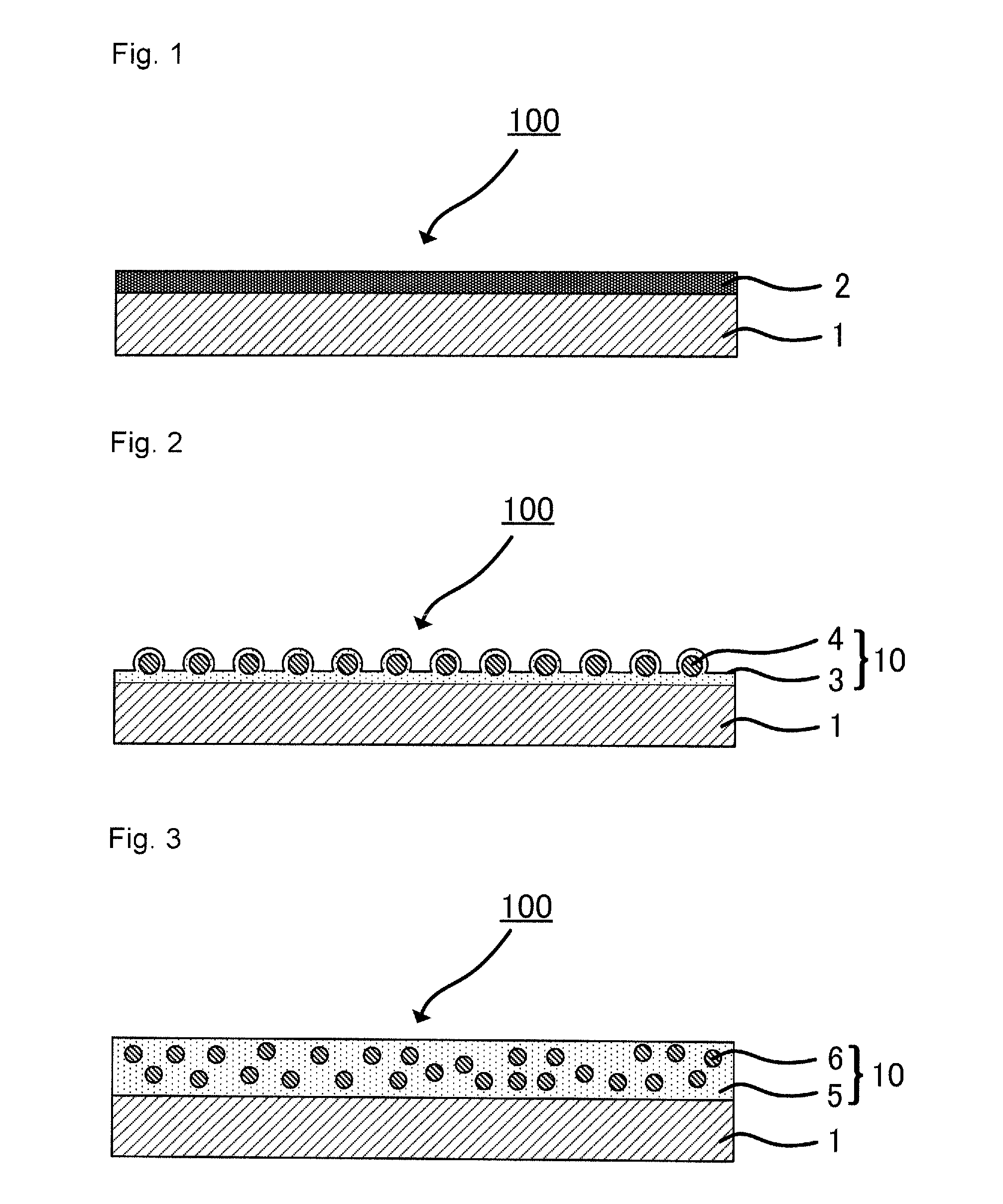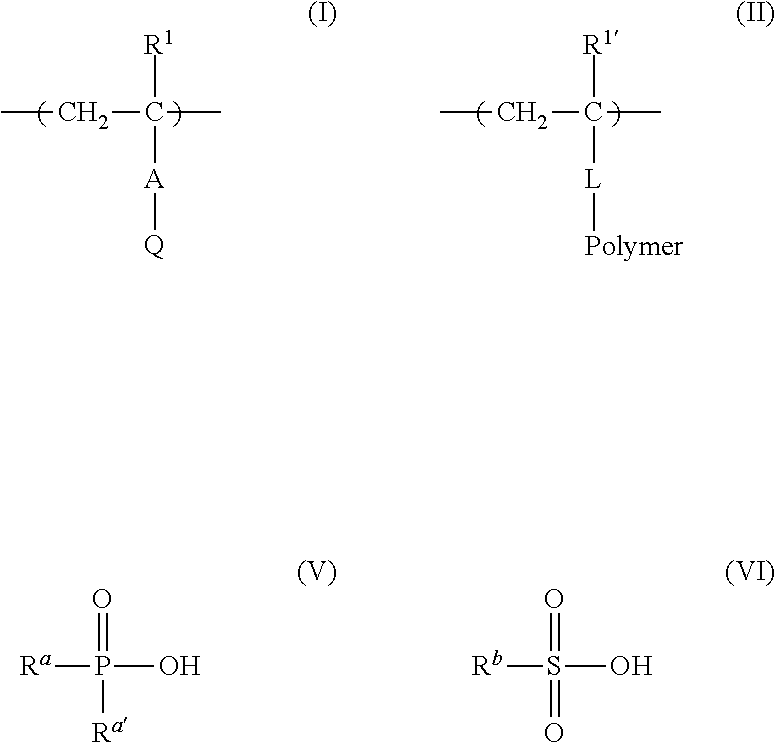Metal particle dispersion, article and sintered film using metal particle dispersion, and method for producing sintered film
a technology of metal microparticles and metal particles, which is applied in the direction of non-metal conductors, conductors, transportation and packaging, etc., can solve the problems of insufficient storage stability of metal microparticles, further increase of dispersibility, and film cloudiness, and achieve excellent dispersibility and dispersion stability
- Summary
- Abstract
- Description
- Claims
- Application Information
AI Technical Summary
Benefits of technology
Problems solved by technology
Method used
Image
Examples
synthesis example 1
Production of Copper Particles
[0222]First, 64 g of copper(II) oxide and 5.1 g of gelatin were added to 650 mL of pure water and mixed to prepare a mixed solution. The pH of the mixed solution was adjusted to 10 by using 15% ammonia water. Then, the temperature of the mixed solution was increased from room temperature to 90° C. for 20 minutes. After increasing the temperature, with stirring the mixed solution, a solution obtained by mixing 6.4 g of 1% mercaptoacetic acid solution and 75 g of 80% hydrazine monohydrate, which function as a complexing agent, with 150 mL of pure water, was added to the mixed solution and reacted with the copper(II) oxide for one hour, thereby producing copper particles. Then, the copper particles were washed by filtration and dried, thereby obtaining the copper particles of Synthesis Example 1. The copper particles were observed with a scanning transmission electron microscope (STEM) and found to have an average primary particle diameter of 50 nm.
synthesis example 2
Synthesis of Macromonomer MM-1
[0223]First, 80.0 parts by mass of propylene glycol monomethyl ether acetate (PGMEA) was put in a reactor equipped with a cooling tube, an addition funnel, a nitrogen inlet, a mechanical stirrer and a digital thermometer and heated to 90° C. with stirring under a nitrogen flow. A mixed solution of 50.0 parts by mass of methyl methacrylate, 15.0 parts by mass of n-butyl methacrylate, 15.0 parts by mass of benzyl methacrylate, 20.0 parts by mass of 2-ethoxyethyl methacrylate, 4.0 parts by mass of mercaptoethanol, 30 parts by mass of PGMEA and 1.0 part by mass of α,α′-azobisisobutyronitrile (AIBN) was added thereto in a dropwise manner for 1.5 hours, and the mixture was reacted for 3 hours. Next, the nitrogen flow was stopped and the reaction solution was cooled to 80° C. To the cooled reaction solution, 8.74 parts by mass of Karenz MOI (manufactured by Showa Denko K. K.), 0.125 part by mass of dibutyltin dilaurate, 0.125 part by mass of p-methoxyphenol an...
synthesis example 3
Synthesis of Macromonomer MM-2
[0224]First, 80.0 parts by mass of PGMEA was put in a reactor equipped with a cooling tube, an addition funnel, a nitrogen inlet, a mechanical stirrer and a digital thermometer and heated to 90° C. with stirring under a nitrogen flow. A mixed solution of 100.0 parts by mass of methyl methacrylate, 4.0 parts by mass of mercaptoethanol, 30 parts by mass of PGMEA and 1.0 part by mass of AIBN was added thereto in a dropwise manner for 1.5 hours, and the mixture was reacted for 3 hours. Next, the nitrogen flow was stopped and the reaction solution was cooled to 80° C. To the cooled reaction solution, 8.74 parts by mass of Karenz MOI, 0.125 part by mass of dibutyltin dilaurate, 0.125 part by mass of p-methoxyphenol, and 10 parts by mass of PGMEA were added and stirred for 3 hours, thereby obtaining a 49.8% by mass solution of the macromonomer MM-2. The thus-obtained macromonomer MM-2 was confirmed by GPC (gel permeation chromatography) under the condition of ...
PUM
| Property | Measurement | Unit |
|---|---|---|
| average primary particle diameter | aaaaa | aaaaa |
| wavelengths | aaaaa | aaaaa |
| viscosity | aaaaa | aaaaa |
Abstract
Description
Claims
Application Information
 Login to View More
Login to View More - R&D
- Intellectual Property
- Life Sciences
- Materials
- Tech Scout
- Unparalleled Data Quality
- Higher Quality Content
- 60% Fewer Hallucinations
Browse by: Latest US Patents, China's latest patents, Technical Efficacy Thesaurus, Application Domain, Technology Topic, Popular Technical Reports.
© 2025 PatSnap. All rights reserved.Legal|Privacy policy|Modern Slavery Act Transparency Statement|Sitemap|About US| Contact US: help@patsnap.com



